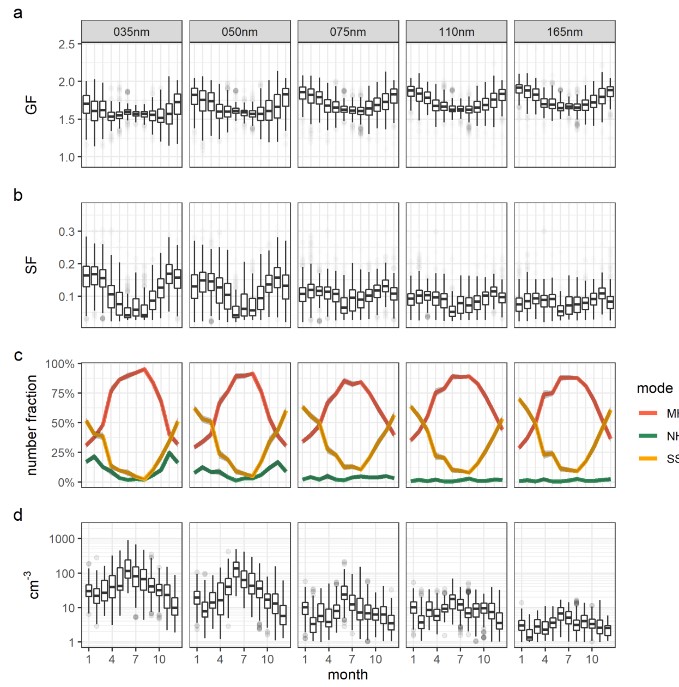Xu, W., Ovadnevaite, J., Fossum, K. N., Lin, C., Huang, R., O’Dowd, C., and Ceburnis, D.: Seasonal trends of aerosol hygroscopicity and mixing state in clean marine and polluted continental air masses over the Northeast Atlantic, J Geophys Res Atmospheres, https://doi.org/10.1029/2020jd033851, 2021.
Five years of nearly continuous measurements of aerosol hygroscopicity by a Humidified Tandem Differential Mobility Analyzer (HTDMA) at Mace Head research station are presented, making it the longest aerosol hygroscopicity dataset in marine environment and Northeast Atlantic region in particular. The main goal of this work was to examine seasonal patterns of aerosol hygroscopicity and mixing state in a variety of air masses. The entire data set was categorized into clean marine and polluted continental sectors to reveal contrasting physico-chemical features. Distinct seasonal patterns were revealed where hygroscopicity of the clean sector aerosol was significantly higher than that of the polluted sector aerosol. The median growth factors (GF) of clean and polluted sectors were 1.67 and 1.31, respectively. Clean sector aerosol median GF reached the lowest values in summer and the highest in winter pointing at an impact of marine biological activity and wind speed driven sea spray production to aerosol hygroscopicity. Conversely, polluted sector aerosol reached the highest median GF of all sizes in summer due to the decrease of anthropogenic emission, enhanced photochemical ageing and secondary inorganic aerosol formation. Wintertime aerosols in both sectors were largely externally mixed, while summertime aerosols were relatively internally mixed. A distinct subset of near-hydrophobic Aitken mode particles smaller than 50 nm in diameter was observed in the wintertime clean sector which most likely originated in the clean marine atmosphere based on the evolution of air mass back trajectory clustering.

Fig. The seasonal trend of (a) growth factor (GF), (b) spread factor (SF), (c) average number fractions of Near Hydrophobic (NH, green), More Hygroscopic (MH, red) and Sea Salt mode particles (SS, orange), particle number concentration in the clean sector.

